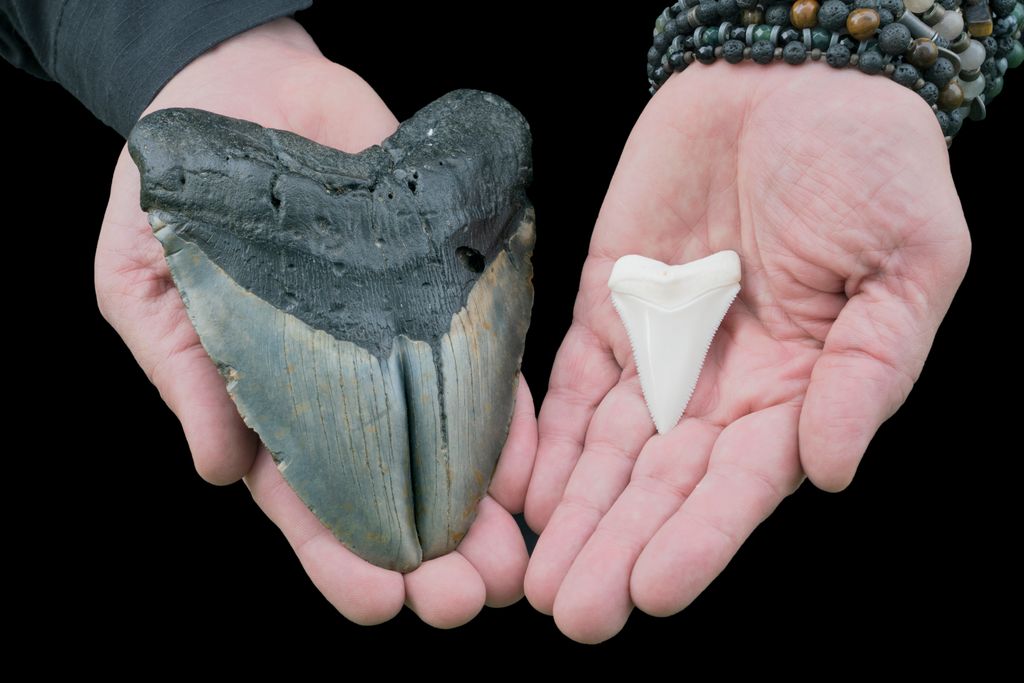‘We were looking at the wall and suddenly I saw a little something’
Divers have found fossils of Megalodon teeth in Mexico after searching a flooded inland cave.
The prehistoric shark was one of the most fearsome predators ever to have lived. They grew up to 50ft long, weighed up to 60 tonnes and roamed the waters more than three million years ago.
As part of efforts to work out exactly how the marine giants went extinct, scientists have managed to find teeth Megalodon teeth.
The fossils were discovered by speleologist and photographer Kay Nicte Vilchis Zapata and her speleologist partner Erick Sosa Rodriguez during a dive in a sinkhole in Maderia, Mexico.
Fifteen dental fossils were found in the district of Cholul, which was once thought to have been submerged under the sea.
Of the 15 fossils, 13 belonged to three different species of shark – one of which was the megalodon.
Speaking to local media in 2019, Zapata said: “We were looking at the wall and suddenly I saw a little something, I went closer and I saw that it was a tooth, that was the first and apparently it belonged to a sawshark.”
The other two species that the teeth belonged to were the mackerel shark and the sawshark, the Daily Star reports.

Speleologist Sosa Rodriguez explained: “It is just proof of what scientists have already studied and written about; what kind of wildlife lived here millions of years ago when this was part of the sea.
“The anthropologist and physicist Salvador Estrada has already launched an investigation.”
Research earlier this year found that the megalodon’s body temperature may have contributed largely to its eventual extinction.
Scientists have hypothesised that the creature, whose name means ‘big tooth’, was able to maintain a body temperature that was about 7C warmer than the surrounding water.
A study which analysed the enamel of megalodon teeth found that the amount of energy the megalodon used to stay warm could have contributed to its extinction.
Lead researcher Robert Eagle, a UCLA assistant professor of atmospheric and oceanic sciences, said: “Studying the driving factors behind the extinction of a highly successful predatory shark like megalodon can provide insight into the vulnerability of large marine predators in modern ocean ecosystems experiencing the effects of ongoing climate change.”
Randy Flores, a UCLA doctoral student and fellow of the Centre for Diverse Leadership in Science, explained: “Maintaining an energy level that would allow for megalodon’s elevated body temperature would require a voracious appetite that may not have been sustainable in a time of changing marine ecosystem balances when it may have even had to compete against newcomers such as the great white shark.”
Related links:
Ancient monument older than Egyptian pyramids sat on UK council estate
Scientists find ‘giant’ dinosaur spider fossil in Australia
Woman doubts existence of dinosaurs because ‘their bones aren’t everywhere’















































